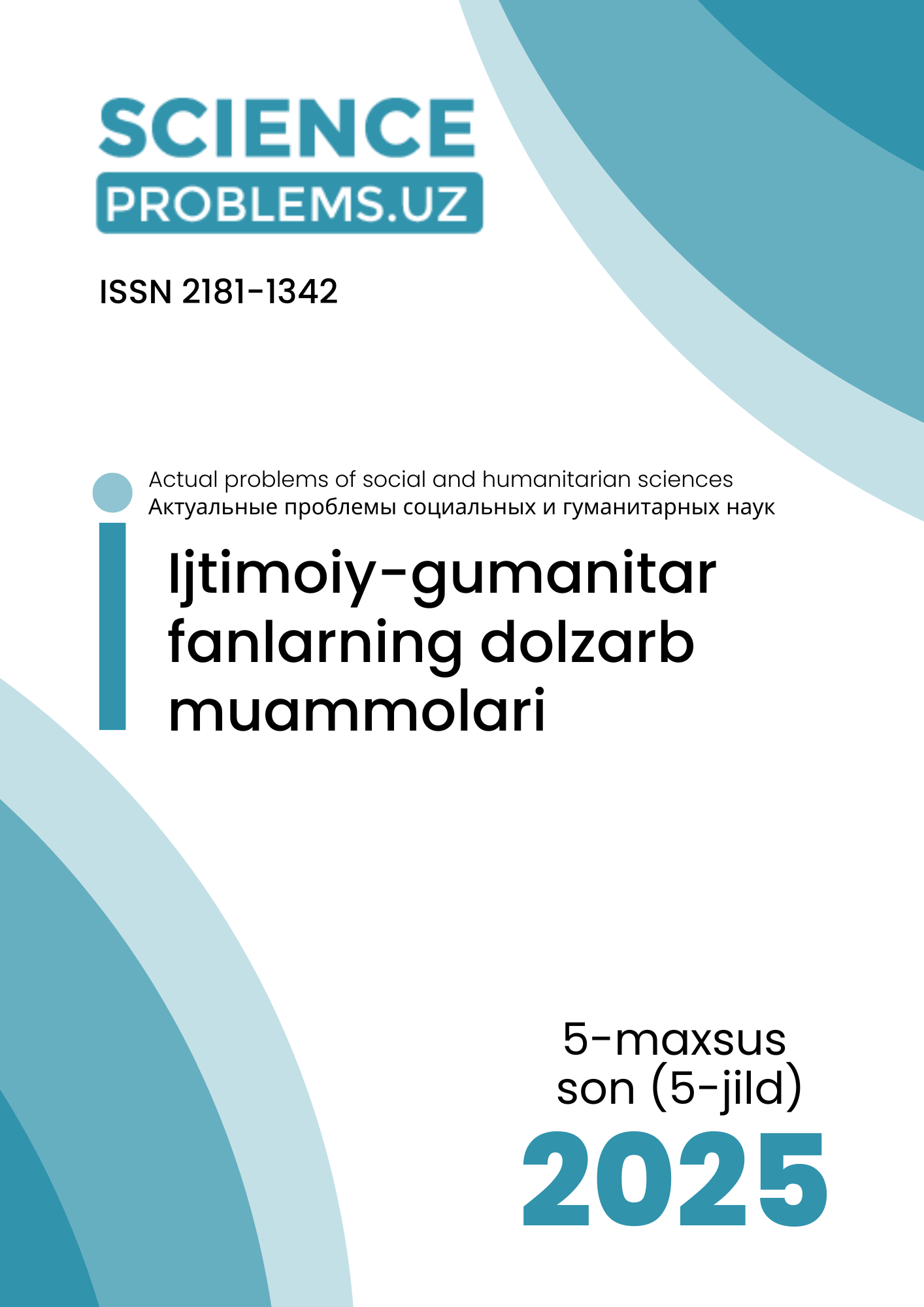OʻZBEK VA INGLIZ TILLARIDA LEKSIK BIRLIKLAR OBRAZ VA RAMZLARNI YUZAGA KELTIRUVCHI VOSITALAR
Kalit so'zlar
https://doi.org/10.47390/SPR1342V5SI5Y2025N32Kalit so'zlar
leksik birliklar, obraz, ramz, metafora, timsollar, frazeologizmlar, semantika, madaniy tafakkur, stilistika, tarjima muammolari, ingliz tili, oʻzbek tili, ramziy maʼno, til vositalari, milliy oʻziga xoslik.Annotasiya
Ushbu maqolada oʻzbek va ingliz tillaridagi leksik birliklarning obraz va ramzlarni shakllantirishdagi roli tahlil etiladi. Til — nafaqat aloqa vositasi, balki madaniy-maʼnaviy qadriyatlar aks etgan obrazlar va timsollarni yaratish vositasidir. Maqolada metafora, metonimiya, frazeologizmlar, ramziy birliklar, timsollar orqali har ikki tilning semantik imkoniyatlari ochib beriladi. Oʻzbek va ingliz xalqlarining mentalitetiga xos maʼno qatlamlari va obraz yaratish usullari qiyosiy tahlil qilinadi. Shuningdek, lingvistik va madaniy kontekstda bunday birliklarning tarjima jarayonidagi semantik noaniqliklari, ramziy ifodalarni izohlashdagi murakkabliklar ham koʻrib chiqiladi. Maqola oʻzbek va ingliz tillaridagi milliy rang-baranglikni ifodalovchi leksik vositalarni aniqlash, ularning funksional imkoniyatlarini ochib berish va oʻzaro uygʻunlikda tahlil qilishga qaratilgan.
Manbalar
1.Lakoff, G., Johnson, M. (2003). Metaphors We Live By. University of Chicago Press.
https://press.uchicago.edu/ucp/books/book/chicago/M/bo3637995.html
2. Cruse, D. A. (2011). Meaning in Language: An Introduction to Semantics and Pragmatics. Oxford University Press.
https://global.oup.com/academic/product/meaning-in-language-9780199559466
3. Abdullayeva, G. (2015). Frazeologizmlarning milliy va umuminsoniy xususiyatlari. Toshkent: Muharrir.
4. Mamajonov, A. (2007). O‘zbek tilining leksikologiyasi. Toshkent: Fan.
5. Kussmaul, P. (1995). Training the Translator. John Benjamins Publishing.
https://benjamins.com/catalog/btl.1
6. Yusupov, U. (2009). Tarjimashunoslik va interferensiya masalalari. Toshkent: Fan.
7. Crystal, D. (2010). The Cambridge Encyclopedia of Language. Cambridge University Press.
8. Halliday, M. A. K., Matthiessen, C. M. I. M. (2014). An Introduction to Functional Grammar. Routledge.
9. Lakoff, G., & Johnson, M. Metaphors We Live By. — University of Chicago Press, 2003
https://press.uchicago.edu/ucp/books/book/chicago/M/bo3637995.html
10. Cruse, D. A. Meaning in Language: An Introduction to Semantics and Pragmatics. — Oxford University Press, 2011. https://global.oup.com/academic/product/meaning-in-language-9780199559466
11. Halliday, M. A. K., & Matthiessen, C. M. I. M. An Introduction to Functional Grammar. — Routledge, 2014.
12. Kussmaul, P. Training the Translator. — John Benjamins Publishing, 1995.
https://benjamins.com/catalog/btl.1
13. Crystal, D. The Cambridge Encyclopedia of Language. — Cambridge University Press, 2010.
14. Mamazhonov, A.O‘zbek tilining leksikologiyasi. — Toshkent: Fan, 2007.
15.Abdullayeva, G.Frazeologizmlarning milliy va umuminsoniy xususiyatlari. — Toshkent: Muharrir, 2015. https://ziyonet.uz
16. Yusupov, U. Tarjimashunoslik va interferensiya masalalari. — Toshkent: Fan, 2009. https://ziyonet.uz








